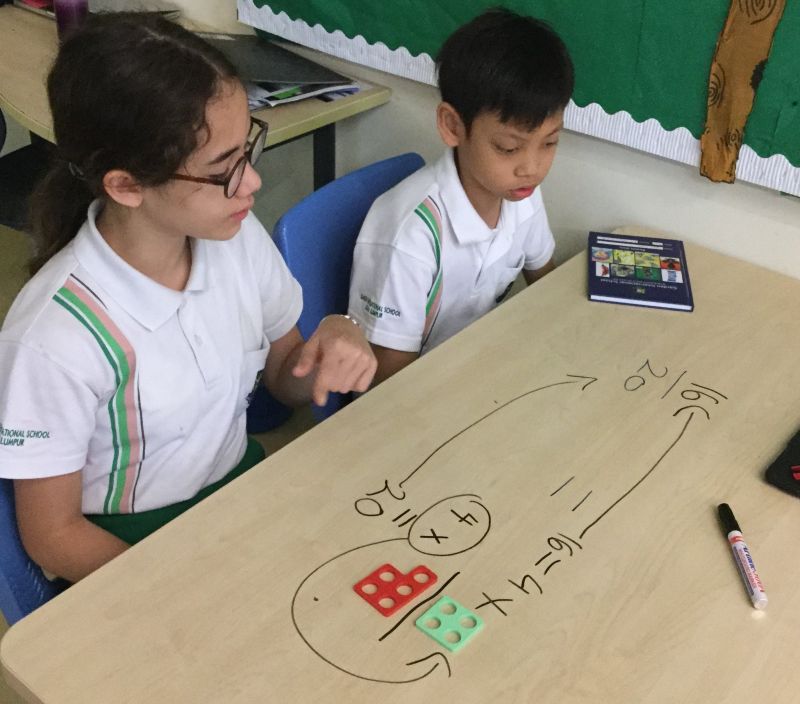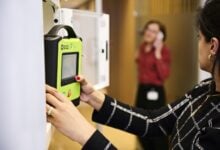Balancing the maths equation
We investigate programmes, resources, and PLD opportunities to help improve teacher and student outcomes in maths.

For the past 20 years, New Zealand’s maths attainment has been sliding.
Highlighted in a recent report from the Education Review Office (ERO), many factors have contributed to this, including maths anxiety among both teachers and students, a lack of emphasis on the subject, and a lack of cohesive best practice principles.
Read the latest print edition of School News HERE
In the ERO’s latest good practice report, ‘Making it Count: Teaching Maths in Years 1 – 3′, two enablers of good maths teaching practice have been identified. First, enabling teacher knowledge in both the subject itself, and pedagogy practices, ensures confidence and effectiveness when developing maths understanding in students. Secondly, a school culture and curriculum that promotes good practice in maths teaching is crucial.1
There are a variety of maths programmes available which draw on expert knowledge and best pedagogical practice. Some programmes have been specially developed for the New Zealand context and curriculum with Ministry of Education.
Programmes come in a variety of formats and delivery, from online-based courses to workbooks and even in-person support. Whole-school approaches to maths programmes can ensure consistency and context-appropriateness for the student demographic.
Different formats will have individual benefits and drawbacks. For example, an online delivery can include interactive components for students and teachers that can engage students in maths teaching. Alternately, workbooks can provide guidance for analogue and hands-on activities that may be more effective in demonstrating maths principles due to their practical nature. Both formats can have home-delivery components that ensure wrap-around support for students both in-class and at-home.
Maths programmes can include PLD that will level-up teachers looking to build their confidence in maths teaching delivery. Having a confident and capable teacher is often key to building maths comprehension in students.

Interested in maths approaches to support yourself, your students or your school? We spoke to some industry insiders.
Margi Leech from Edushop said a structured maths approach supports teachers step by step, ensuring they have the confidence, knowledge, and skills to explicitly teach key mathematical concepts.
“A structured maths approach is a whole of school approach, providing students with a consistent journey throughout the school year, each year,” Ms Leech said. “It provides the connections in maths – like the spider web featured in the beginning of the curriculum refresh.
“The teaching sequence across the year provides a continuous revisiting and reinforcing of concepts, rather than in a block approach where children don’t revisit these concepts until the next term or later. Structured manipulatives are used to support the language, discussion, exploration of relationships and generalise the concepts being learned. They also show the teacher what the student is thinking and how they are proving their justifications,” Ms Leech said.
“Students feel confident and experience success as they apply their knowledge and understanding to solve problems. A structured maths approach ensures that vocabulary is explicitly taught making the language of mathematics accessible to everyone.”
Allowing students to get hands on with tactile, multisensory manipulatives clarifies for learners what maths needs to be done to solve a problem. Ms Leech said: “Manipulatives are a powerful way to deepen understanding. They provide a unique scaffold for students of all ages to help them explain, reason, and justify.”

Janine Trembath from Symphony Maths said using software as part of your math curriculum is beneficial for both students and teachers.
“For students, digital solutions should provide interactive learning through math models, personalised learning paths tailored to individual needs, multiple visual representations of mathematical concepts, immediate feedback, and increased engagement and motivation.
“Digital solutions help teachers to cater to the varying needs of students in a class. Teachers can benefit from time-saving data-driven insights, access to libraries of supporting resources, and professional development opportunities,” Ms Trembath said.
Math software can help teachers cater to students with different learning needs and those who have English as an additional language. “Helpful features include interactive visual representations of each problem type and instant visual feedback that models why an answer is correct. Visual representations help all students to develop a deeper understanding of underlying math concepts. Math blocks and number lines are two examples of tried-and-true math models for foundational skills learning.
“Math has definite skill progressions,” Ms Trembath said. “Regardless of their progress in the math curriculum, students need to develop a deep understanding of the underlying concept behind their learning every step of the way. A student struggling with fractions for example may be struggling with any one of addition, subtraction, multiplication, or division.
“Move the focus away from correct answers, and engage students to demonstrate multiple ways to explain why their answers are correct. They will become more effective problem solvers in math and in life.”
All students arrive at school holding a range of preconceptions based on their culture, home environment and capability. Sue Timperley, author for Caxton Educational, said for any maths programme to cope with this diversity, educators must understand, and value, both the maths and the differences that students bring into the classroom.
“At the forefront of the programme must be the aim to allow students to develop a positive attitude towards maths,” Ms Timperley said.
“When students experience real tasks, they can envisage the situations in which a problem is grounded, and use their own experience and knowledge as a basis for developing strategies to assist with solutions. In dealing with complex real-life situations, students learn that maths involves more than just getting the right answer but is also about being able to explain and justify their approach.”
Ms Timperley said students should experience a range of different ways of learning, using both written resources and technology.
“Feedback from the teacher or peers is crucial in helping embed learning. Showing working using pen and pencil or reporting back on how a task was accomplished are ways to do this. Questioning of the methods used helps students clarify what they have done.
“Allowing for independent thinking time, partner and small group and whole class discussions will assist students to better understand new concepts. There is a need to interpret information, think about and present arguments, apply previous learning and make connections both within maths and with other bodies of knowledge.”
References
1Making it Count: Teaching Maths in Years 1 – 3. Education Review Office, Wellington. 2024.









